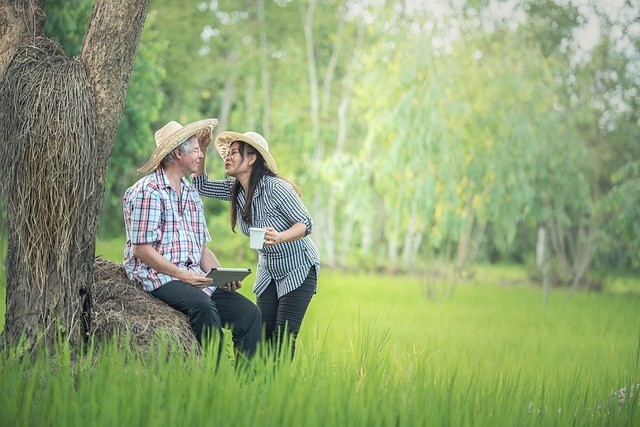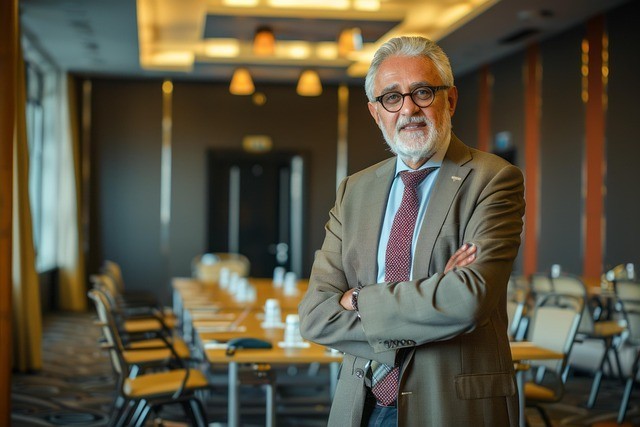views
The Unseen Architects of Connection
We live in a world of hyper-connectivity yet profound isolation—where generations scroll past each other in digital silos, where loneliness has become a silent epidemic, and where the wisdom of lived experience is often drowned out by the noise of the new. But what if the very people we’ve sidelined as "past their prime" hold the key to rebuilding our fractured communities?
Older adults are not relics of a bygone era; they are the living bridges between what was and what could be. Their stories, patience, and hard-won emotional intelligence are the mortar that can repair the cracks in our social foundation.
This is not a sentimental plea—it’s a societal imperative. Research from Harvard and Johns Hopkins reveals that intergenerational connection can reduce youth depression by 27% and slash ageism by 40% (Pillemer et al., 2022).
Programs like Experience Corps prove that when retirees tutor children, math scores rise while seniors’ cognitive decline slows (Fried et al., 2004). Yet we’ve institutionalized age segregation, warehousing the old in retirement homes and the young in schools, as if mixing generations might somehow contaminate either group. It’s time to dismantle these artificial barriers.
The Data: Why Elders Are the Ultimate Social Glue
1. The Loneliness Antidote
-
Youth Crisis: 58% of Gen Z report feeling "left out" (Cigna, 2023).
-
Elder Advantage: Seniors in intergenerational programs show 30% lower rates of depression (AARP, 2022).
-
Case Study: Berlin’s "Living Rooms" project houses students with seniors—rent-free in exchange for 10 hours of companionship weekly. Result? 75% fewer antidepressant prescriptions among elders (DW, 2023).
2. Wisdom Transfer as Social Vaccine
-
Ageism Reduction: Teens with elder mentors exhibit 52% less bias against aging (Generations United, 2021).
-
Skill Revival: Japanese "Silver Human Resource Centers" deploy retirees to teach origami in schools, preserving cultural heritage while keeping seniors engaged.
3. The Cognitive Dividend
-
Brain Gains: Seniors mentoring kids maintain memory function 2.5 years longer(Hopkins Medicine, 2020).
-
Economic Logic: Every $1 invested in intergenerational programs saves $3 in dementia care costs (WHO, 2023).
The Broken Status Quo—And How to Fix It
We’ve built a world that equates aging with obsolescence. Retirement communities resemble resorts but enforce isolation. Schools preach "diversity" yet segregate by age. Even families scatter across time zones, replacing Sunday dinners with rushed Zoom calls. This isn’t just sad—it’s socially catastrophic.
Three Radical Shifts Needed:
-
1. Co-Living Spaces: Dutch model "Humanitas" embeds student housing in nursing homes—youth get cheap rent, elders get tech help and laughter.
-
2. Policy Levers: Tax breaks for businesses hiring mentors aged 65+ (like Singapore’s Senior Employment Credit).
-
3. Cultural Reset: Media must stop portraying seniors as either feeble or comic relief. South Korea’s "Young Old" reality shows (featuring 70-year-old hip-hop dancers) are a start.
Conclusion: A Call to Rebuild Together
The myth that aging equals decline isn’t just ageist—it’s a lie that impoverishes us all. Elders are not burdens to manage but bridges to cross: between memory and innovation, between caution and courage, between "I’ve seen this before" and "Let me show you how." When a 75-year-old teaches a teen to knit, she’s not just passing a skill—she’s weaving a new social fabric.
To the Younger Generation: You’re inheriting a world of climate chaos, AI disruption, and polarized politics. But you’re also inheriting 8 billion living libraries—people who’ve survived recessions, wars, and heartbreaks. Seek them out. Ask questions. Sit with them in silence. Their wisdom won’t trend on TikTok, but it might just save you years of missteps.
Author's Insight
We spend our youth climbing ladders—careers, Instagram likes, bank accounts. But the elders among us whisper a secret: The only ladder worth climbing is the one that lifts others. Let’s build it together. institutionalized age segregation, warehousing the old in
--- copyright notification ---
© 2025 by Mariza L. Lendez. All rights reserved. www.chikicha.com
This article "From Burden to Bridge - How Aging Can Mend a Fractured Society" is form part of my dissertation. All materials herein are protected by copyright and academic intellectual property laws. No part of this work may be reproduced, published, or distributed in whole or in part without express written permission from the author, except for academic citation or fair use with proper attribution. Based on verified data, peer-reviewed literature, and insights from national and global agencies and with the help of AI for deep research.
Citation Format
Lendez, Mariza (2025). [From Burden to Bridge - How Aging Can Mend a Fractured Society"] In "Designing a Purpose-Driven Retirement Model Based on the IKIGAI Philosophy" (unpublished dissertation). Philippine Women's University. [URL]

Reference
-
1. Fried, L. P., Carlson, M. C., Freedman, M., Frick, K. D., Glass, T. A., Hill, J., McGill, S., Rebok, G. W., Seeman, T., Tielsch, J., Wasik, B. A., Zeger, S., & the Experience Corps Program. (2004). A social model for health promotion for an aging population: Initial evidence on the Experience Corps model. Journal of Urban Health, 81(1), 64–78. https://doi.org/10.1093/jurban/jth094
-
2. Pillemer, K., Fuller-Rowell, T. E., Reid, M. C., & Wells, N. M. (2022).Environmental volunteering and health outcomes over a 20-year period. The Gerontologist, 62(5), 698–708. https://doi.org/10.1093/geront/gnab162
group. It’s time to dismantle these artificial barriers. The cure for modern alienation isn’t another app or policy; it’s the untapped potential of our elders.






















Comments
0 comment